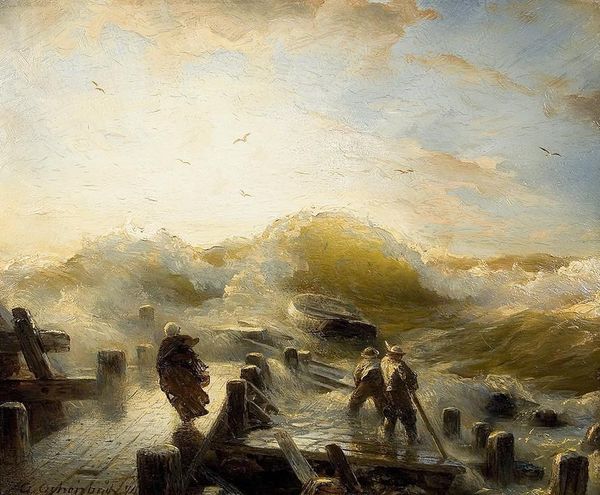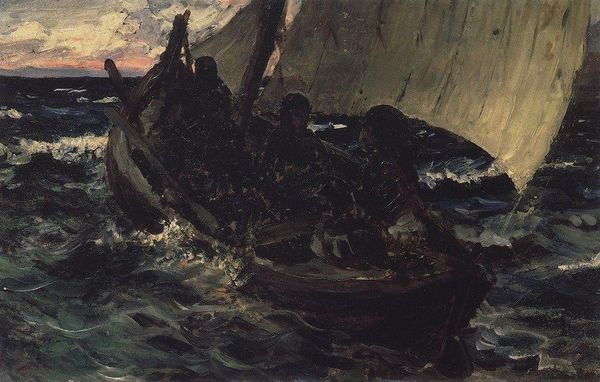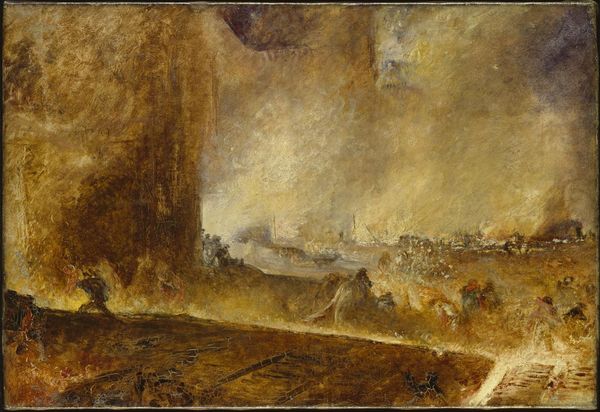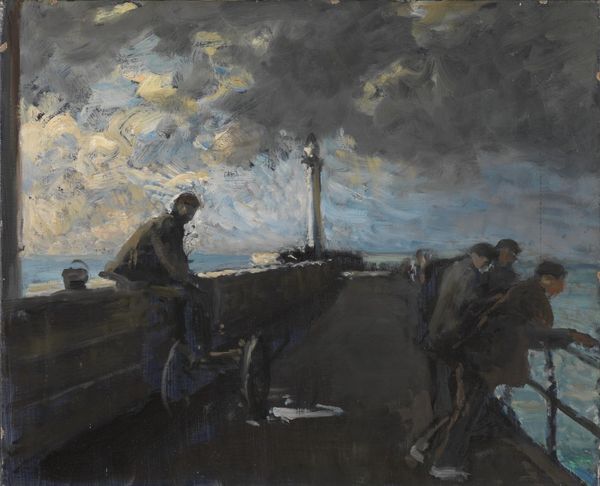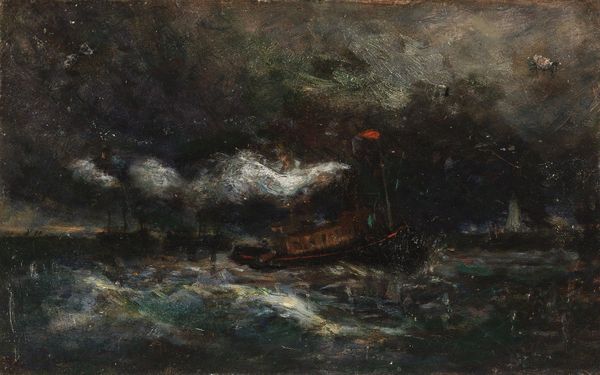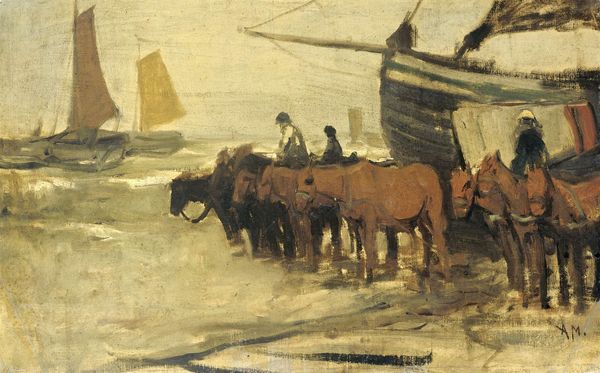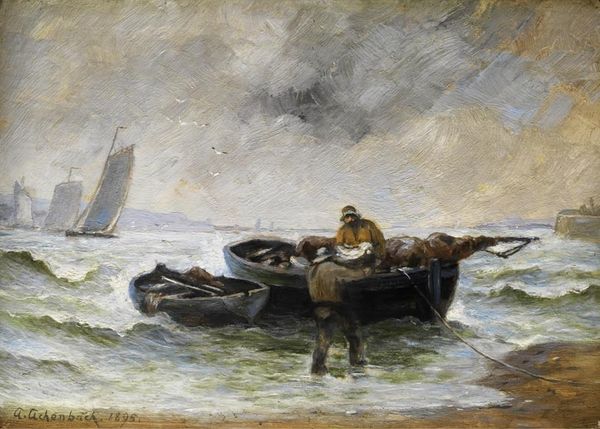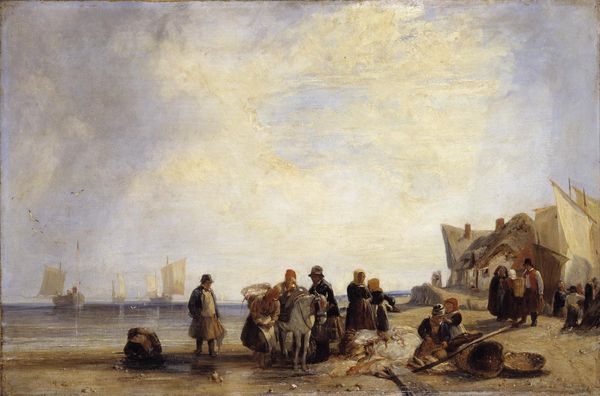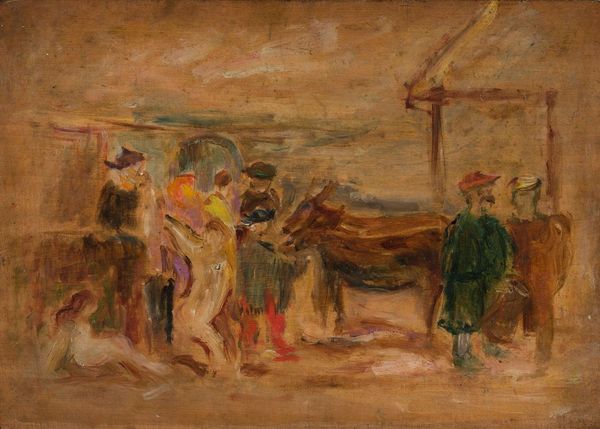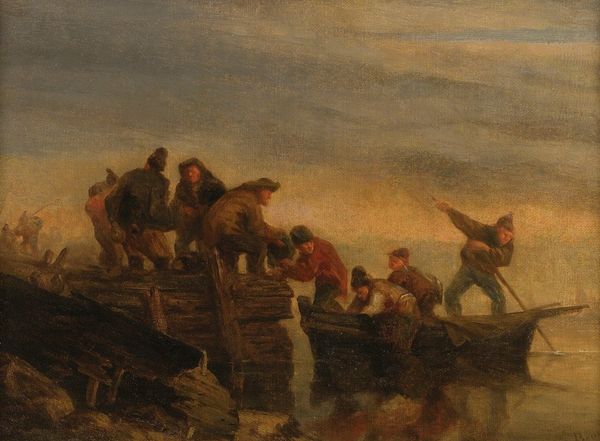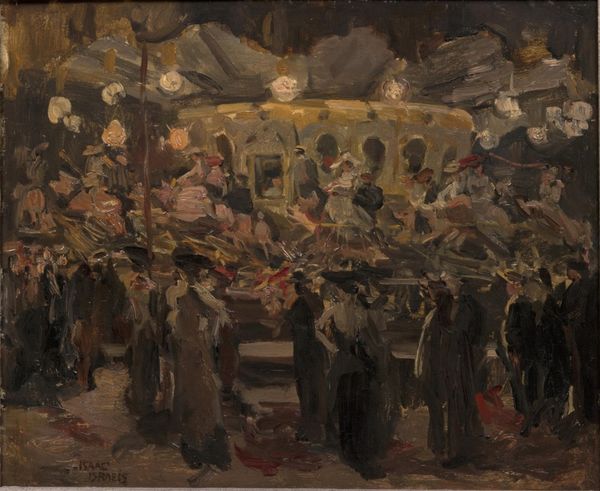
Copyright: Public domain
Curator: Rupert Bunny's 1902 oil on canvas, "Boat building, Etaples," depicts a flurry of activity at a French shipbuilding yard. What springs to mind for you on seeing this? Editor: Immediately, it evokes a sense of industry and hard work, but rendered with a gentle, almost dreamlike quality. The palette is quite muted, but the visible brushstrokes inject vitality into the scene. Curator: Indeed. The brushwork is very typical of Impressionism, Bunny, an Australian artist, spent much of his career in France. There, he captures this crucial moment when industrial practices and maritime economies were shaping social structures of towns such as Etaples. Editor: And the symbolism within a harbor is powerful; a vessel that is almost completed. We are talking about journeys and passages that have psychological connotations that represent our aspirations and the dreams we hold, just as much as the physical voyages that take place onboard such a ship. I think, also, how the presence of horses suggests reliance on animals and a very old industry with time-honored traditions. Curator: Good points. We can interpret these elements of labor and also traditions alongside emerging ideas about industrial advancement and technology that defined this turn of the century moment. This piece offers us a visual access point to those changes. Notice that while steam power revolutionized industries, Bunny's work grounds us in the enduring reliance on traditional skills and resources. Editor: Yes, Bunny seems less concerned with the 'machine age' itself. The dark pot in the lower corner appears to have no use while they build, only its shadow exists, as do memories and cultural ideas, a shared consciousness, that informs the builders and sailors of its future uses, and its ability to travel through unknown worlds, where they become known. Curator: Right, and this is particularly pertinent, as museums are deeply shaped by narratives surrounding national identity, and Bunny navigates those cross-currents adeptly in the Australian art canon. The symbolism here does reflect our desire to search for national symbols within art of that time. Editor: I find I read a very profound engagement of self-awareness to those historical and social events from Bunny. This piece evokes the past while also capturing an immediacy in its painterly expression, thus the emotional core seems incredibly timeless. Curator: Well, I agree that it certainly presents a captivating moment in time viewed through the prism of progress. Editor: Absolutely, the canvas remains resonant, beckoning viewers to contemplate these historical moments from different perspectives.
Comments
No comments
Be the first to comment and join the conversation on the ultimate creative platform.
